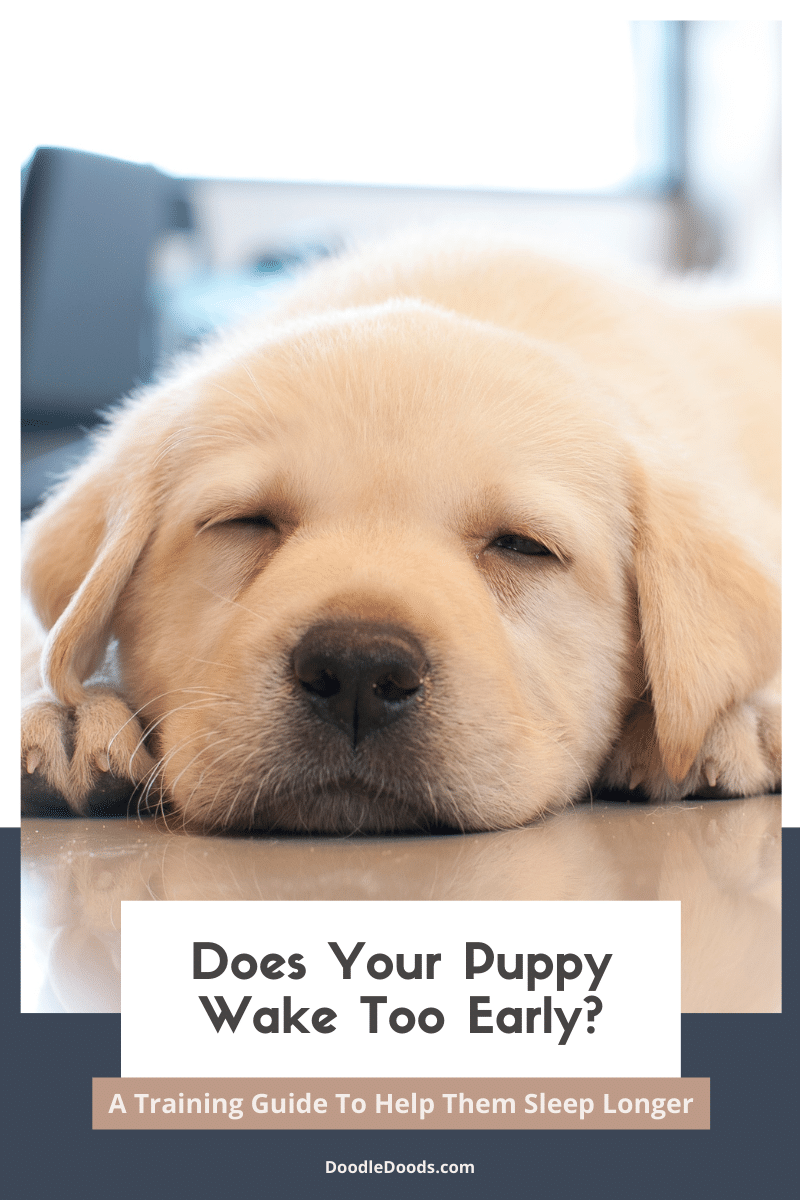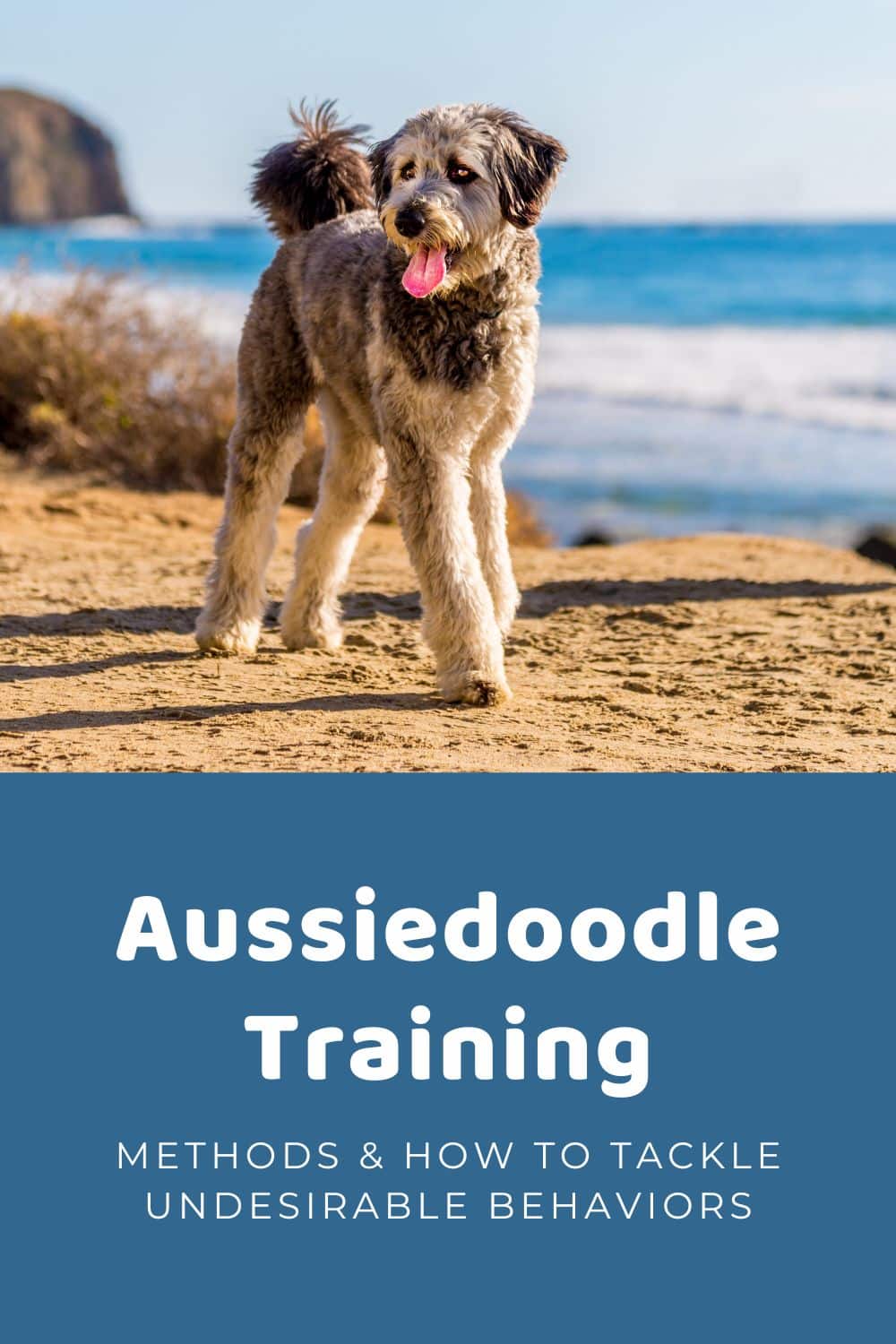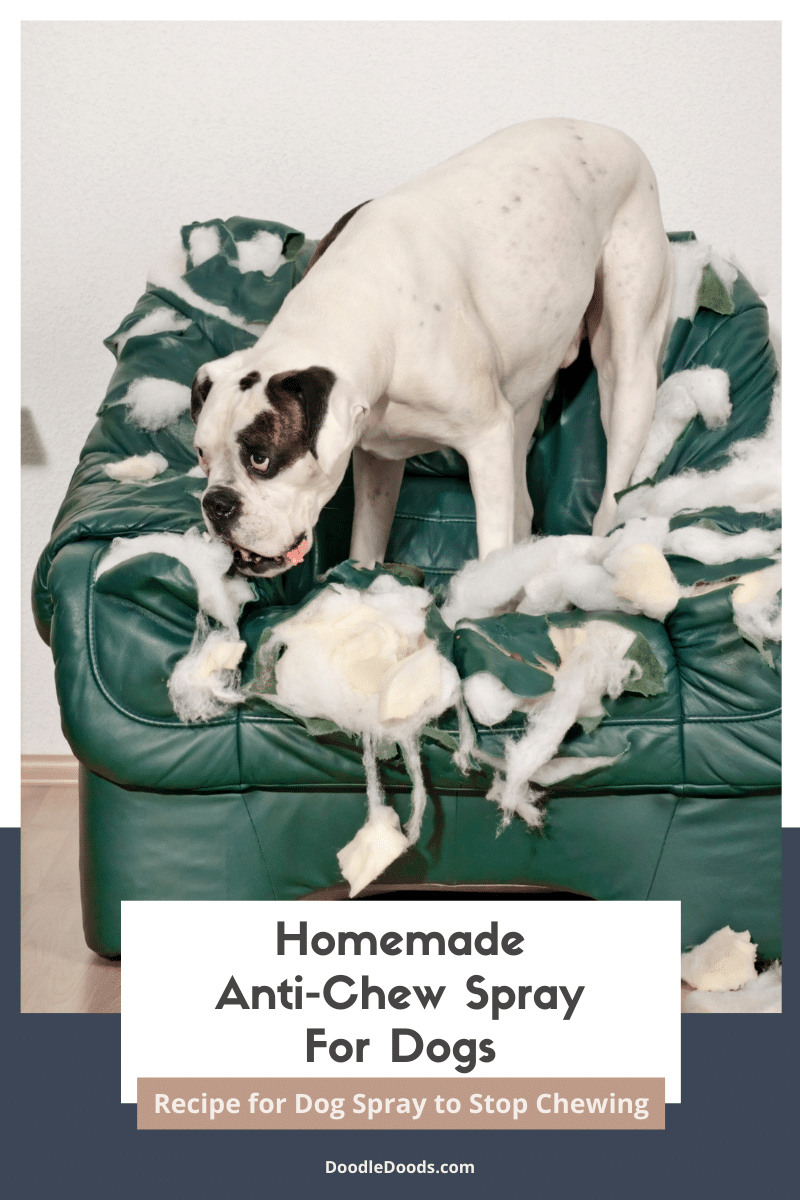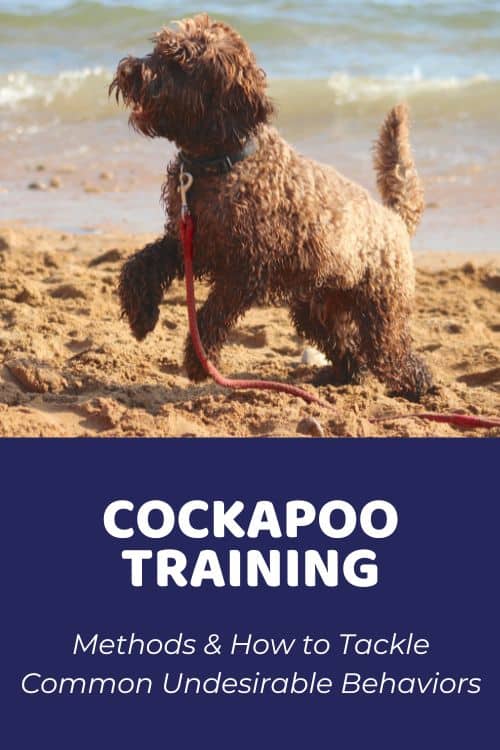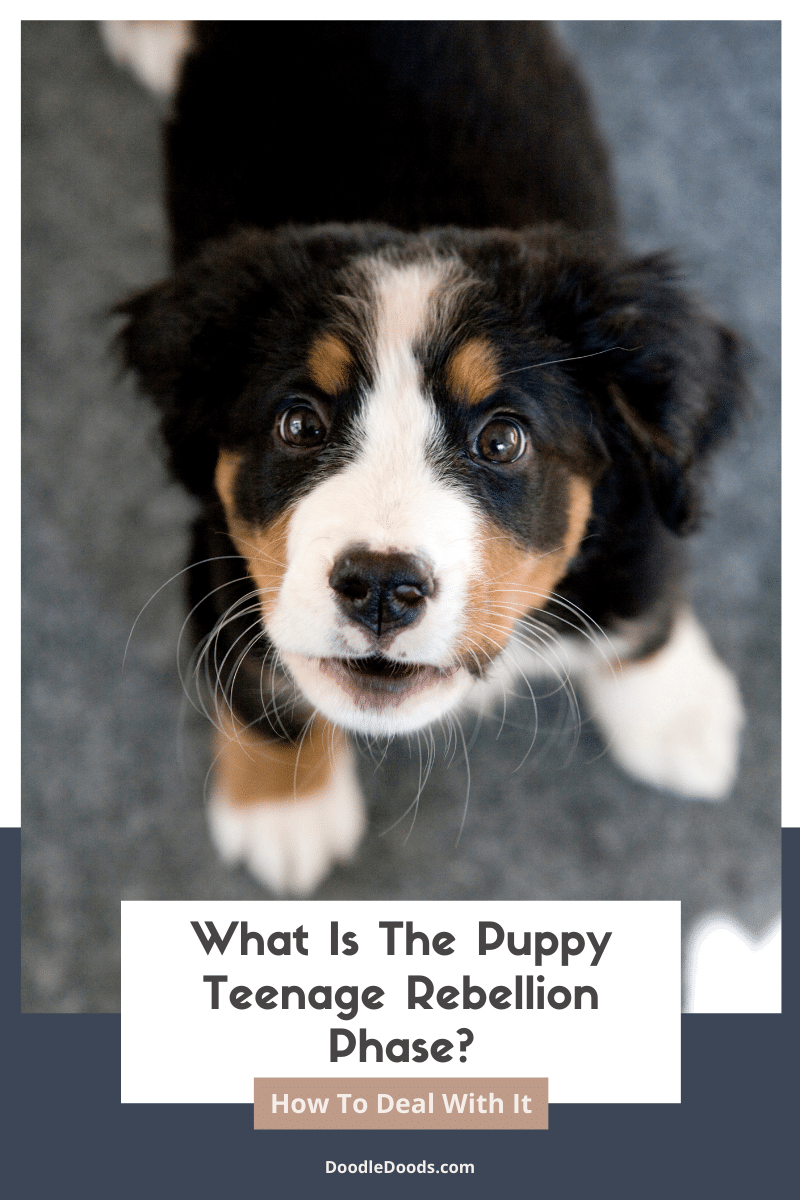In an ideal world, we’d spend all our time with a new puppy at home, snuggling and cuddling, and keeping watch of their silly antics. But at one point or another, the question arises – when and how to leave your puppy at home alone? In this guide, we’ll discuss when it’s safe to leave your pup on their own, but also why it’s important to teach them how to enjoy some alone time, too. Keep on reading to learn more.
Table of Contents
- How To Leave Your Puppy At Home Alone: Introduction
- When Can You Start Leaving A Puppy Alone?
- How Do I Leave My Puppy Alone At Home? 5 Tips Recommended By Experts
- How To Deal With Your Dog’s Separation Anxiety?
- How To Leave Your Puppy At Home Alone: FAQs
How To Leave Your Puppy At Home Alone: Introduction
Puppies are so cute and cuddly, it’s an absolute torture having to leave them alone for more than 5 minutes. With their chubby little feet and adorable puppy eyes, how could you ever spend even a second away from them? And while in the first days and weeks it’s best to keep a close eye on your pup as much as possible, it’s also necessary to teach them that spending time on their own is a great way to relax. Not to mention, you probably have other responsibilities to tend to as well, such as work or school, your family, and other daily errands that need to be done.
Adult dogs that have been properly trained and socialized usually don’t have much of an issue spending time alone. But it’s a completely different story when they’re going through puppyhood. After all, they’re still just little babies and it might not be as easy to just leave for the whole day and hope for the best. You don’t want any potty accidents to happen and you’ve also got to make sure that all of your puppy’s needs are met. This includes their emotional wellbeing.
Finding the right balance of spending time with your pup, but also teaching them to enjoy alone time is crucial to prevent issues like separation anxiety later down the line. Even if you work remotely and don’t really have to leave your puppy at home alone all that much, it’s best to start teaching them from a young age that alone time is good. This way, your little pooch will stay calm whenever you have to leave the house.
When Can You Start Leaving A Puppy Alone?
To teach your puppy to enjoy spending time alone and prevent issues later in the future, you should start leaving them alone for short periods of time as soon as possible. And that’s where crate training comes in handy.
It’s also important to understand how long your puppy can spend time on their own. This usually correlates to your puppy’s age. Adult dogs and fully potty trained puppies have good bladder control, but that’s not the case with younger pups. A younger puppy will also rely on you a lot more for food, water, and overall support and companionship.
The general guideline is that your puppy’s bladder control correlates to their age in months. Puppies less than 10 weeks of age can usually hold their bladder for an hour. If your puppy is two months old, they can probably go without peeing for two hours. If they’re three months of age, then three hours, and so forth. You can also use the same timeline for crate training your puppy. For example, a three month old pup shouldn’t spend more than three hours in a crate. The same goes for spending time confined in any other space, such as a spare room.
Those First Few Weeks With A New Puppy…
Also, keep in mind that puppies will need a bit of time to get used to their new home. If you’re adopting a puppy from a breeder, you’ll likely bring them home around the time they’re eight weeks of age.
The first few days and weeks are going to be a bit more stressful for the both of you. You’re still getting to know each other and your puppy might also feel confused and a bit anxious due to being in a completely new environment, away from everything and everyone they’ve known so far.
But that’s not to say that you shouldn’t start leaving your pooch alone for short periods of time. During those first few weeks, you can start leaving your puppy alone in their crate or in another room for about 30 to 60 minutes at a time while you’re still at home. The more your puppy gets used to spending time alone, the easier it will be once you actually have to leave the house.
How Do I Leave My Puppy Alone At Home? 5 Tips Recommended By Experts
Now that we know when and for how long pups can start spending time on their own, it’s time we discuss the best tactics on how to leave your puppy at home alone. Whether you need to get some groceries or stop by the office, the following tips will help ensure that your puppy is safe and sound while you’re out and about.
Create A Calm Puppy-Proof Home
Needless to say, you won’t be able to keep an eye on your puppy 24/7. You need to prepare meals, use the restroom, shower, and do anything else that grown adults usually do. But knowing how puppies are, they can get into a lot of trouble when left unsupervised. To keep your puppy and your precious belongings safe, you should puppy-proof your home even before your new puppy arrives.
Make sure that all choking hazards and electrical cords are far away from your puppy’s reach. Don’t have any batteries or coins lying around. Even shoes, dirty laundry, and plastic bags should be safely stored away. The same goes for anything that could be remotely harmful for your puppy’s health. These include cleaning supplies and household chemicals, houseplants, medications, and also human foods.
You should also keep all doors, windows, toilet lids, and trash cans closed. Keep away all sharp and heavy objects, and remove your puppy’s access to stairs, fireplaces, and pools. You can also create a puppy-safe area in your living room or in another more spacious area by using pet gates, baby gates, or movable playpens and play yards.
Another thing to consider is the overall feel of the room your puppy spends time in. Some people swear by background noises. You can try turning on the TV on a lower volume setting or playing some calming classical music for your dog in the background. In some cases, it could also be helpful to cover the windows with curtains and blind so that your puppy won’t get startled by something happening outside the house.
Crate Train Your Puppy
Crate training is generally one of the best ways to teach a puppy to spend time alone and also help with potty training. With crate training, the key is to create a safe haven for your puppy to relax and recharge in. On that note, you should never confine your puppy or an adult dog inside the crate as a form of punishment.
Your pup’s crate is a safe and comfy place for them to nap or just relax in. Get your puppy a crate that’s suitable for their size. If it’s too small, they won’t feel comfortable inside the crate. And if it’s too big, they may start to go potty inside the crate. You can either upgrade to a larger crate once your puppy starts nearing adulthood or use a crate divider until they’re big enough for the whole crate.
To make your puppy’s crate nice and cozy, place inside some comfy bedding and a few plush toys. You can also leave a few treats there for your puppy so that they’re more inclined to spend time inside the crate.
Once your puppy has become better at spending time alone and seems to have a much better control over their bladder, you can start giving them more freedom around the house.
For more details on crate training, check out our ultimate guide called How To Crate Train A Puppy And Puppy Crate Training Schedule
Gradually Increase Your Puppy’s Alone Time
When teaching your puppy that it’s okay to spend time alone, make sure to do it gradually and over time. First, you’ll leave your puppy alone in their crate or playpen for about 10 to 15 minutes at a time. If your puppy seems fine with it, the next time you can increase the time by five minutes.
But if you notice your puppy getting visibly upset, you might have to take a few steps back and leave them for a bit shorter period of time inside their safe area for the next few days. The key is to introduce your puppy to alone-time gradually and create positive associations with it.
Keep in mind that it’s completely normal for puppies to start whining and crying when having to spend time alone, especially in the beginning. This issue should usually go away after a week or two of gradual training.
Also, you shouldn’t immediately pay attention to their crying or let them out of their crate or playpen as soon as they get fussy. This will only teach your pooch that you’ll let them out as soon as they start crying. And trust us, they really are fast and clever like that!
Keep Safe Chew Toys, Treats, And A Pet Camera Ready
Puppies can get bored rather quickly, especially if they’re alone and have no form of entertainment. So, be sure to stock up on plenty of toys and treats for your puppy to enjoy their alone time.
For a younger puppy, opt for puppy-safe chew toys. These toys will keep your pup entertained, but also soothe any discomfort if they’re teething. You can also get them some treat-dispensing toys and puppy-safe chews that they can gnaw on whilst they’re spending time on their own. By the way, this also helps redirect your puppy’s attention away from any other items they’d try to chew on. If your puppy is spending time alone in a playpen, you can use a dog-safe anti-chew spray on some items that you know your puppy loves to chew on.
Remember that you should never leave your puppy unattended with treats, toys, or any other items that could potentially become choking hazards. Always opt for treats and toys that are safe for your puppy’s age and size. Also, double check that they won’t splinter or break before giving them to your puppy.
We also recommend you install a pet camera that lets you keep an eye on your puppy whenever you’re in another room or have to leave the house. Cheaper pet cameras are just as great for supervising your pooch from afar. However, you might also want to look into some fancier options that also dispense treats and let you interact with your pup remotely.
Exercise Your Pet
A helpful, yet super simple hack is to exercise your puppy before leaving them at home alone. Go for a little walk in the backyard, play fetch, or just run around in the house together to tire out your pup. In addition to that, mental exercise is also great for making your pup a bit less wired. You can do a few minutes of training with them, have them solve puzzles, or play with interactive toys.
To be fair, you should do these things with your puppy every day anyway, so schedule another session right before you have to leave your puppy at home alone. Make sure to do some research beforehand about your puppy’s exercise needs according to their breed, activity levels, and age. Puppies have lower stamina than adult dogs, so you want to break those workout and training sessions apart throughout the day. Similarly, some breeds have naturally higher levels of energy and will therefore also need more stimulation from a young age.
Hire A Dog Sitter Or Visit Your Puppy During Your Lunch Break
The younger your puppy is, the less time they can spend time alone. So for those very first weeks with your new puppy, it might be best if you take a small vacation from your usual working schedule. This way, you can help your new pet adjust to their new home.
But at one point it’s inevitable that you have to start leaving your puppy alone for longer hours at a time. For those days when you’re gone for more than six hours, having someone to spend time with your puppy in the middle of the day can help prevent your pup from becoming lonely.
You can hire a trusted dog sitter in your area to watch your pup or hire a dog walker who can visit your puppy and go for a little walk with them. Perhaps you have a trusted friend or family member who wouldn’t mind keeping an eye on your pooch whilst you’re away from home? Or, if possible, you can also come home for an hour during your lunch break so that your pup can stretch its legs and spend some quality time with you.
Another option is to look into trustworthy and reputable doggy daycares in your area. A good dog daycare will ensure that all of your puppy’s needs are met throughout the day and also provide plenty of opportunities to safely socialize and exercise.
How To Deal With Your Dog’s Separation Anxiety?
As you probably can imagine, if your puppy has your undivided attention at all times throughout the day, it’s bound to cause issues at some point when you have to leave your puppy at home alone. For this reason, we strongly recommend you start training your puppy as soon as possible to spend time on their own. Otherwise, it’s very likely that they may develop separation anxiety when the time actually comes.
Separation anxiety can manifest in many ways, including peeing and pooping inside the house while you’re away, scratching at the door or pet gate, chewing, digging, and other destructive behaviors, pacing, or barking and howling.
We recommend you create a daily schedule for your puppy that you follow day in and day out. This helps your puppy to adjust to their new home much quicker, as it helps build their confidence and create a sense of safety and security in their new environment. On those days when your puppy has to spend time alone during the day, try to follow the same schedule as closely as possible to prevent stress and anxiety for your pup.
Another thing to remember is that some breeds are very people-oriented and more prone to separation anxiety than others. For this reason, not all breeds and crossbreeds can spend the whole day alone without any problems. That’s why we always recommend thoroughly researching breeds before adopting a puppy so that you can be sure that your new pup will have an easy and smooth transition into your home and daily life.
For more information and tips on separation anxiety, be sure to read our full guide: How To Help A Dog With Separation Anxiety
How To Leave Your Puppy At Home Alone: FAQs
It’s actually very normal for young puppies to cry a little bit when you’re leaving them home alone. The best you can do is to teach your puppy that spending time alone is an enjoyable experience. Make sure your puppy is entertained for the time you’re gone by providing them with puppy-safe toys and treats. You can also play some soothing background music or turn on the TV, just make sure that they’re not too loud. You can also tire them out with exercise and fun training sessions. And, of course, do not leave your puppy at home alone for extended periods of time without no one present.
As harsh as it sounds, you should, in fact, ignore your puppy crying when you leave them alone. If you let them out of their crate or playpen as soon as they start crying, it’ll only enforce this behavior. Your puppy will learn that crying will get your attention and stop you from leaving. What you want to do instead is to create positive associations for your puppy whenever they spend time alone so that they actually learn to look forward to it.
If your puppy is still less than 6 months old, it’s not recommended to leave them home alone for the whole day. While most puppies are almost house trained by this age, they likely won’t be fully house trained. They probably still learn how to control their bladder and some accidents from time to time are bound to happen. If you really must leave your puppy alone for the whole day, whether you have to go to the office or have some other errands that take more than 6 hours, then be sure to hire a pet sitter or ask a trusted family member or friend to keep your pup company.
How To Leave Your Puppy At Home Alone: Final Thoughts
Understanding how to leave your puppy at home alone is important for any pet parent, regardless if your pup seems to be clingy or has more of an independent streak. During the first weeks and months of your puppy’s life, you obviously have to spend much more time with them. Babies as they are, they simply need much more supervision to ensure that all of their needs are met throughout the day. But it’s just as important to teach them that it’s enjoyable to spend time alone. And remember, the sooner you start, the easier it will be for both you and your little pooch.
Learn How to Care for Your Doodle Puppy!

Perfect for first-time Doodle parents, get ALL your questions answered, including questions new Doodle parents don’t even think to ask.
Plus, get $700 worth of Bonus Materials for FREE, including:- Doodle Parenthood Community and Support Group ($190 value)
- Doodle Puppy Growth Tracker ($20 value)
- EMERGENCY Cheatsheet: When To Call The Vet Immediately ($50 value)
- HELP! Button ($145 value)
- And SO MUCH MORE!




